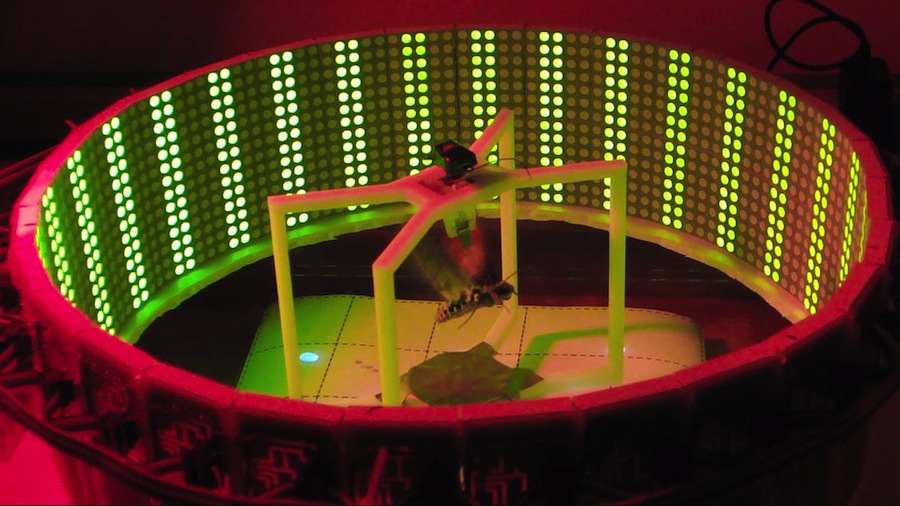Watch a Cyborg Moth Twirl on the Dance Floor (Video)

With the goal of one day making tiny drones out of living insects, a team of engineers created a cyborg moth and watched it spin inside an "insect disco" full of flashing lights.
The researchers didn't actually control the moth during flight. But by using an electrical implant, they say they recorded crucial data on how the cyborg moth coordinates its muscle movements to twirl right and left.
While the insect was in its late pupal stage, still wrapped in a cocoon, the team from North Carolina State University implanted an electrode in the creature's indirect flight muscles, the researchers explained in a video. By the time the insect developed into an adult moth, enough tissue had grown around the implant that it effectively became part of the insect's body. [Biomimicry: 7 Clever Technologies Inspired by Nature]
Then, the team put the cyborg moth inside a circular "arena" that looks like a miniature disco, complete with panels of LED lights. The moth spun in the same direction as the rotating LED lights, and it was tethered to a platform (almost like a go-go dancer's cage) that was levitated by electromagnets to give the moth freedom to turn left and right.
"By watching how the moth uses its wings to steer while in flight, and matching those movements with their corresponding electromyographic signals, we're getting a much better understanding of how moths maneuver through the air," study researcher Alper Bozkurt, an assistant professor of electrical and computer engineering at NC State, said in a statement.
"We're optimistic that this information will help us develop technologies to remotely control the movements of moths in flight," Bozkurt added. The research was detailed last month in the Journal of Visualized Experiments.
If the concept takes flight, cyborg moths could perhaps be used as emergency responders in places too dangerous for humans to enter. These "biobots" could be steered into disaster zones to gather information and look for survivors. Or, these bionic insects could be recruited as tiny spies. Engineers started exploring the possibility of cyborg moths several years ago at a lab at Cornell University, as part of a project known as HI-MEMS (Hybrid Insect Microelectromechanical Systems) for the U.S. military's Defense Advanced Research Project Agency, or DARPA.
Get the world’s most fascinating discoveries delivered straight to your inbox.
The idea of outfitting animals with artificial parts to do the dirty work of people is hardly new. (It could perhaps be traced back to the Renaissance, when at least one German artillery expert was writing about strapping bombs to cats and sending them behind enemy lines.) More recently, hardy cockroaches have become popular cyborg candidates. In 2012, Bozkurt and his colleagues demonstrated that they could steer a Madagascar hissing cockroach along a set path by sending electrical signals to the insect's antennae and other sensory organs.
Follow Megan Gannon on Twitter and Google+. Follow us @livescience, Facebook & Google+. Original article on Live Science.

